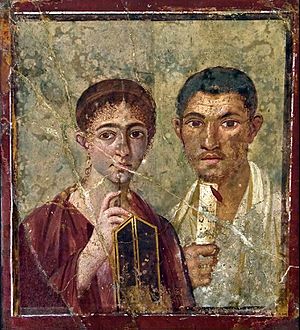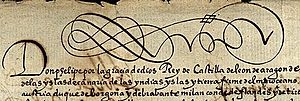Primary source facts for kids
A primary source is like a direct message from the past! It's an original document or item that hasn't been changed. Think of it as something created by someone who was actually there or experienced the event. Historians and researchers use primary sources to get information straight from the time period they are studying.
Primary sources are different from secondary sources. Secondary sources are usually created later, using primary sources as their information. For example, a history textbook is a secondary source because it talks about events based on many primary sources.
Contents
What is a Primary Source?
A primary source is an original piece of information. It comes directly from the time period or event you are studying. It was made by someone who saw or lived through what they are describing. This makes it a very important tool for understanding history.
For example, if you want to learn about ancient Rome, a wall painting from Pompeii is a primary source. It shows you what people in Pompeii thought was important or how they lived.
Why are Primary Sources Important?
Primary sources are super important because they offer a direct look into the past. They let us hear voices and see things from the actual time. This helps us understand events and people without someone else's interpretation.
Historians use these sources to build their understanding of history. They carefully study primary sources to find facts and details. This helps them write accurate accounts of what happened.
Different Kinds of Primary Sources
Primary sources can come in many forms. They are not just old papers! Here are some examples:
- Written documents: Letters, diaries, speeches, government records, newspapers, and original books.
- Visual materials: Photographs, paintings, drawings, maps, and films.
- Audio recordings: Interviews, speeches, and music from the time.
- Objects: Tools, clothing, buildings, and other artifacts.
- Oral histories: Interviews with people who experienced an event.

Primary vs. Secondary Sources
It's helpful to know the difference between primary and secondary sources.
- A primary source is the original evidence. It's the "first-hand" account.
- A secondary source is created after the event, using primary sources. It's a "second-hand" account or an analysis.
For example, if you read a diary written by a soldier during a war, that's a primary source. If you read a history book about that war, written by a historian years later, that's a secondary source. The history book uses information from many primary sources, like diaries, letters, and official reports.
Related pages
See also
 In Spanish: Fuente primaria para niños
In Spanish: Fuente primaria para niños


